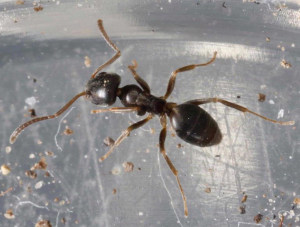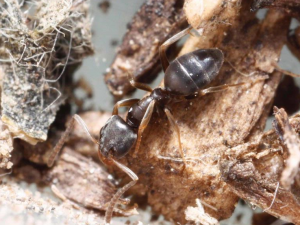Sugar Ants (Odorous)
They’re unsightly and can wreak havoc in your kitchen. Yes, we’re talking about sugar ants, also known as “odorous house ants.” Since 1986, our government-licensed technicians have been applying their biological sciences background to eradicate these pests. Due to our experience and effectiveness, when the city’s homeowners and business owners spot sugar ants, Victoria calls on Victoria Pest Control!
Odorous House Ants (Sugar Ants) Treatments
Odorous house ants, often referred to as “sugar ants” in Victoria, are one of the more common household ants in the Greater Victoria Area. They get their name from the rancid smell produced when crushed or disturbed. Victoria Pest Control has extensive experience eliminating and controlling odorous house ants, and has developed an exclusive bait only treatment program, which is safe, effective, and eliminates the need for pesticide applications in most infestations. Treating odorous house ants requires in-depth knowledge of the ants nesting behaviour, as this can dramatically influence how treatment programs are designed. We have been solving odorous house ants for our customers since 1986, and have the knowledge and experience to create a program to meet your needs. Call or email us 250-477-0322 or info@victoriapestcontrol.com
Signs of Activity & Recommendations
• Odorous house ants foraging indoors, especially in the winter time.
• Odorous house ants entering and exiting the structure, carrying food into the structure.
• Odorous house ants often forage on sweet things. They may enter homes to exploit spilled food or liquids, even if a nest is not present in the structure. It is important to remove spilled food or liquids, as odorous house ants are known to relocate nests close to resources (food).
• Keep vegetation away from structures and homes. Reduce soil levels to expose 4-6 inches of foundation.
• Call Victoria Pest Control!
Odorous House Ants – Tapinoma sessile
Order: Hymenoptera Family: Formicidae Subfamily: Dolichoderinae Genus: Tapinoma Species: sessile
Description: Small, 2-4mm, brown to black in colour, gives rancid smell when crushed or disturbed. One node between thorax and abdomen, node is flat and depressed.
Nest Size: Varies dramatically, as few as 50, to thousands, and even millions.
Queens: Odorous house ants can have colonies with one queen (monogyne), or colonies containing multiple queens (polygyne).
Colony Spatial Structure: The colony structure of odorous house ants is fascinating and an example of a species ability to adapt to it’s environment. In the “wild”, or undeveloped areas, T. sessile is often found as a single nest colony (monodomous), with one queen (monogyne), and around 50 workers. They are often found nesting in acorns or under leaf litter, or organic debris. In urbanized areas, this ant can completely transform, constructing super colonies that extend over many square kilometers. In urban areas, we often find multiple nests, with hundreds to tens of thousands of workers, with multiple functioning queens, in multiple nests. Odorous house ants have a very wide tolerance for nest site development, and have been found in walls, electrical outlets, toilet lids, potted plants etc. Outdoors they can be found almost anywhere! It is crucial when controlling these ants to understand that the colony may be bigger than just your home, or structure, and management plans must be adjusted to address this.
Informational Links
http://www.purdue.edu/newsroom/research/2010/100330BuczkowskiOdorous.html
http://www.purdue.edu/newsroom/research/2011/111101BuczkowskiHawaii.html



